After seeing Joe Johnston’s Captain America: The First Avenger last week, I decided to revisit The Rocketeer, the film which convinced the producers of Captain America to give Johnston the job.
The Rocketeer was a 1991 Disney picture based on the marvelous 80’s comic by the late Dave Stevens. The story takes place in 1930’s Hollywood, and features young pilot Cliff Secord trying to avoid gangsters, spies and government agents, all trying to get their hands on a top secret rocket pack that has fallen into Secord’s hands.
As the film opens, Cliff Secord, played by Billy Campbell, is preparing to test fly a GeeBee racing plane (based on a real historical plane, the GeeBee appears almost exactly as it does in the comic, although they’ve changed the number on the side for some reason). Along with his mechanic and partner, Peevy (Alan Arkin), he plans to fly the plane in national competition. And the plane is a beaut, even though Peevy undoes Cliff’s good luck ritual by pulling his chewing gum off the tail of the plane. But I’m sure nothing bad will come of that…
Unfortunately for Cliff, he happens to fly over a high-speed chase in progress between a couple of gangsters and some FBI agents. Cliff’s plane is hit by a couple of  .45 slugs from a Tommy gun and experiences engine trouble.And there’s a blink-and-you-miss-it throwaway gag.
This shot sets up the villain, Neville Sinclair, star of the movie Wings of Honor, which Cliff will actually go to see later in the film. But notice the producer’s name on the right. Larry Franco was actually one of the producers on The Rocketeer. I wish I could make out the director’s first name better, because I’m sure it’s an anagram of something.
Meanwhile, the thugs shake the Feds for a minute and hide a stolen something in Secord’s hangar. As Cliff is bringing the plane in for a landing, the surviving gangster drives onto the runway and shears off the GeeBee’s landing gear. Cliff barely survives the crash, and his and Peevy’s hopes go up in smoke.
The FBI agents take the news of the stolen property’s destruction to its inventor, Howard Hughes (Terry O’Quinn). This is major departure from the comic, in which the rocket pack was built by pulp hero Doc Savage (never named to avoid copyright problems). Some sources say that the movie also changed Savage to Hughes to avoid having to pay royalties, although I think the reason was more that general audiences just wouldn’t get the joke. They would have no idea who Doc Savage was.
Which is fine. O-Quinn is good in the role. Hughes refuses to build a replacement for the Cirrus X-3 rocket pack, saying it should never have been built in the first place. He burns the plans in his fireplace.
Back in the hangar, Cliff and Peevy find the rocket hidden in Mabel, their old biplane. Cliff accidentally turns it on, and realizes what the straps are for.
Now let’s meet the bad guys.
Timothy Dalton plays Neville Sinclair, an Errol Flynn-like movie star, who has hired mob boss Eddie Valentine to steal the rocket pack for him. Sinclair is upset that Valentine has lost the rocket, and Valentine is upset because Sinclair didn’t warn him the FBI would get involved in this deal. They are not happy partners.
The gangster from the airport (who knows where the rocket is hidden) is in the hospital, so Sinclair calls someone to get the information from him. And meanwhile, Cliff and Peevy test the rocket pack on a statue of Charles Lindbergh. The rocket is frighteningly powerful and Peevy wants to give it back to its rightful owners, but Cliff wants to keep it for a few days and try to make money with it (since they lost three years’ investment in the crash of the GeeBee).
And finally, we get to meet Cliff’s love interest, Jenny…
Sorry, wait a second…
There we go–Jenny, played by Jennifer Connelly. Like Howard Hughes, Jenny is a substitution for the comic character of Betty, a nude model inspired by real-life Bettie Page. Jenny is an aspiring actress excited that she just had a good audition for the new Neville Sinclair film (yes, that Neville Sinclair). She convinces Cliff to see Wings of Honor (starring Neville Sinclair) instead of the Cagney picture Cliff wants to see (which given the story’s setting in October 1938 would probably make the picture Boy Meets Girl, in which future President of the United States Ronald Reagan also appeared).
While they’re at the movie, we meet Sinclair’s hired killer, Lothar.
Lothar was actually the heavy in Cliff’s New York Adventure, the Rocketeer sequel comic in which Secord teamed up with the Shadow. Played here by Tiny Ron in heavy prosthetic make-up designed by Rick Baker, Lothar was a combination of two Golden Age references: the facial features were based on actor  Rondo Hatton, while the name was taken from Mandrake the Magician’s huge assistant in the comic strip by Lee Falk.
Lothar gets the hiding place of the rocket from the hospitalized thug, Wilmer, then kills him while the cop guarding the room listens to Fibber McGee on the radio with a pretty nurse (and in a perhaps accidental nod to historical accuracy, we do not hear Marion Jordan playing Molly during the brief clip, since she was off the show with health problems at the time).
After the movie, Cliff and Jenny visit the Bull Dog Cafe, Cliff’s regular hangout (modeled exactly after the building featured in the comics).
Cliff makes fun of the movie, then he and Jenny argue when she learns he was almost killed in the GeeBee crash, a fact he has neglected to mention to her. Jenny leaves in a huff, and dejected, Cliff goes home to find Peevy working on something in the house they share. The next morning, Cliff finds Peevy asleep in a chair, having worked all night. He also finds The Helmet.
The next morning, Neville Sinclair is on set, starring as the swashbuckling Laughing Bandit, in a scene that directly evokes Errol Flynn’s starring turn as Robin Hood in the year 1938.
Cliff wanders onto the set in search of Jenny and ruins a take. Sinclair demands she be fired immediately, but then overhears Cliff telling her about finding the rocket pack. He tries to find Cliff, but fails, so instead, he hunts down Jenny and charms her with a dinner invitation and an offer of an audition for a better part.
And now we finally get to see what we’ve bought our tickets for. Delayed by his set visit, Cliff has not shown up to work at the air show. Airfield owner Bigelow threatens to fire Cliff if he doesn’t show up and start his act immediately. Retired pilot Malcolm (feeling guilty for having spilled the beans to Jenny and gotten Cliff in trouble the night before) disguises himself and flies the rickety Mabel in his stead.
But he develops engine trouble and is in danger of crashing into the crowded stands. So Cliff races to the hangar where he dons the rocket pack and the helmet and flies to the rescue!
It’s a good scene, balancing action and humor and excellent (for the time) special effects. Malcolm is saved and the mysterious Rocketeer becomes headline news. Oh, and there’s this throwaway cameo by Tiny Ron, the guy who plays the hulking Lothar, only this time without the prosthetic makeup.
But now things turn dark. Lothar kills Bigelow, but not before getting Cliff’s address. He shows up at the house, demanding the rocket, but is interrupted by the arrival of the FBI. Lothar and the Feds have a shoot-out that destroys Cliff and Peevy’s house (as Peevy later says, “We don’t got a house. We got a gazebo.”). Cliff and Peevy barely escape with their lives.
Meanwhile, Jenny is enjoying the good life at the South Seas Club (a place she’s always wanted Cliff to take her) with Neville Sinclair. She gets to meet stars like Clark Gable and W.C. Fields, and we get a completely gratuitous close-up of Jennifer Connelly’s tits.
I realize some folks may see this as exploitative, but I think of it more as preemptive. I mean, let’s face it, they’re big boobs. And they will completely dominate the attention of every guy in the audience, trying to get a good look, unless and until that urge is satisfied. Get it out of the way early, let ’em get it out of their systems, and move on with the story.
This shot is counter-balanced by the fact that Clint Howard gets his cameo in the next shot, which is kind of like a splash of cold water after the effulgence of the Connelly Cleavage. So it all balances out. The scene also features a cameo by Melora Hardin, who would later play significant roles on Monk and The Office, as a singer.
And one thing Johnston does absolutely right here is to use period music, such as the Artie Shaw arrangement of “Begin the Beguine” that Hardin is singing to here, which was one of 1938’s biggest hits. As I revisit this, I am more and more impressed by the period detail, not only accurate for the general time period, but specific to the year. They do take some liberties, but it’s a lot more accurate than I realized.
Thugs show up at the Bull Dog looking for Cliff, and for a moment, it looks pretty dangerous, but then one of the thugs finds Jenny’s name and number written on the wall (her number, alas, is not 867-5309). He calls the number and learns that Jenny is at the South Seas Club with Sinclair. Suspecting a double cross, he heads for the club, leaving two goons behind to guard Peevy and the others.
Cliff and the gang overpower the thugs, then Cliff takes the rocket and flies to the club. He poses as a waiter to warn Jenny about the danger, but before he can escape, he is cornered by Lothar and Valentine’s thugs. He ends up flying the rocket around the inside of the club, Â causing fire and panic and confusion. Sinclair catches Jenny before she can escape and knocks her out thth chloroform.
There’s a beautiful transition from the L.A. Hills to the pillows of Sinclair’s bed, where he has brought the sleeping Jenny. He tries to seduce her into telling him where Cliff is, but she sees through his shallow, smarmy act and knocks him out. Then she discovers his secret room, where she learns that he is a Nazi spy.
Cliff meanwhile hides the rocket pack and returns to the Bull Dog, where he gets a call from Eddie Valentine: bring the rocket to the Griffith Observatory, or Jenny dies. But before he can leave, he is captured by the Feds.
They take him to meet Howard Hughes, who is impressed by Peevy’s modifications to the rocket pack. Hughes demands the rocket back, and shows Cliff some film smuggled out of Germany in which we  get a creator cameo.
That’s Rocketeer creator Dave Stevens, the writer/artist of the original comic, being fitted out in a Nazi prototype rocket pack that blows up on take-off. This is followed by a very well-made propaganda cartoon in which Nazi rocket troops are shown striking at the U.S. The Nazis cannot be allowed to get their hands on the X-3, insists Hughes. But Cliff is only concerned with Jenny, so he makes a desperate escape by gliding away on a scale model of the Spruce Goose.
Cliff flies out to the Griffith Observatory, where he confronts Sinclair and Valentine’s gang. And although sometimes Campbell is a little lightweight and fluffy as Cliff, in scenes like this, he totally nails Cliff’s bravery in the face of his very real fear against superior odds. It’s a really appealing performance.
Both Cliff and Jenny tell Valentine that Sinclair is actually a Nazi spy, which pisses Valentine off. He’s a crook, but he’s an American crook. Unfortunately, Sinclair has not come alone; a force of Nazi paratroopers has come to the meeting, along with the zeppelin Luxembourg.
Then the FBI shows up, and mobsters fight alongside G-Men against Nazis, while Sinclair and Lothar retreat to the airship with captive Jenny in tow. And in the middle of this, we get our thrilling iconic Hero Shot of the Rocketeer as he prepares for the final confrontation.
That’s what I’m talking about! Cliff flies up to the Luxembourg and damages its rudder. He uses the rocket’s momentum to knock Lothar off the zeppelin, then takes off the rocket pack and fights Sinclair hand-to-hand. When a fire starts in the cabin, Sinclair grabs the rocket and takes off with it, not knowing that Cliff has removed gum from a hole in the fuel tank. The rocket pack bursts into flame and sends Sinclair crashing down to earth. The explosion destroys the LAND portion of the HOLLYWOODLAND sign, leaving the landmark we all know today.
And so, life goes on back at the Bull Dog Cafe. Cliff and Jenny are happy together, Howard Hughes has given Cliff a brand-spankin-new GeeBee to replace the crashed one, and Jenny returns to Peevy a set of rocket pack plans he had drawn up. Everyone’s happy, and there’s hope of a sequel.
That is, until the movie flopped at the box office. I have to say, at the time, I thought the movie was a little too fluffy myself, with its Hollywood subplot and simple plot structure. The fanboy in me was disappointed at the lack of Betty and Doc Savage. And Lothar doesn’t come off well; the make-up looks impressive, but it isn’t expressive at all, and the lips barely move when he talks. Plus, Tiny Ron, for all his size, is more clumsy than menacing in motion.
But watching it again, I realize it mostly still holds up really well. The plot structure is solid, the action scenes are fun, and the movie has a low-key charm and down-to-earth quality that is a welcome relief from all the over-the-top CGI bullet-timey nonsense that infests action films today. And it manages to be true to the comic in almost all the ways that really matter, without gratuitous changes that would ruin the flavor. As comic book adaptations go, this is a really good one.


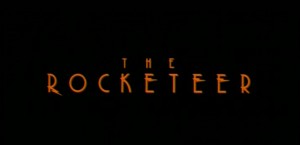
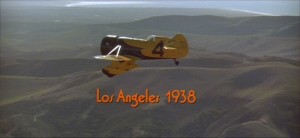
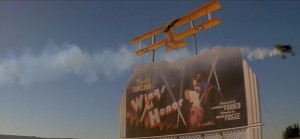
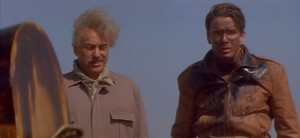
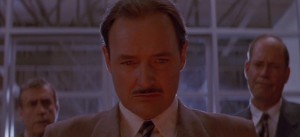
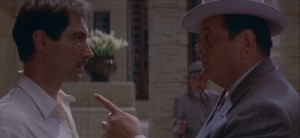
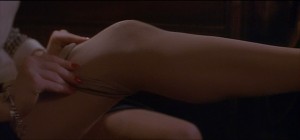
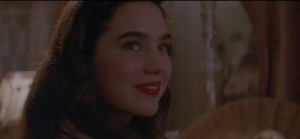
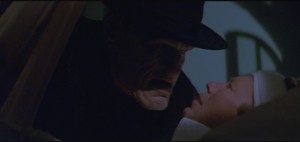
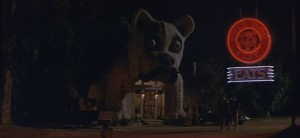
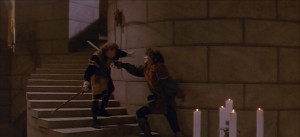
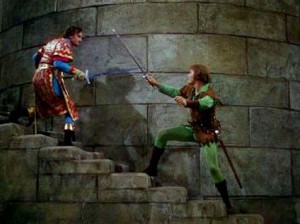
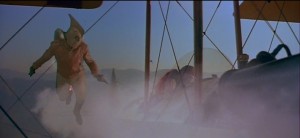
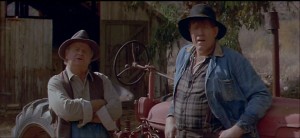

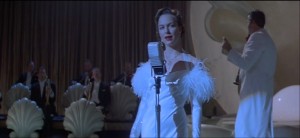
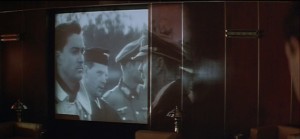



I went with my parents to see this when it first came out, and then watched it tons of times when we got it on video. Even at the age of 11, I wanted about half the outfits that Jenny wears in the movie, but most of all that white gown with the gloves.
So much love for this movie. The more I watch it, the more I love Arkin’s performance as Peevy. He just nails it so well you never notice him acting.
I didn’t love Arkin as Peevy when I first saw the film. The comic version of Peevy was a much crustier, more volatile guy, and there are several scenes where Arkin really underplays. But now I appreciate that more. I’m old enough to appreciate that the guy with all the funny lines doesn’t have act all cra-a-a-a-a-a-a-azy to deliver them.